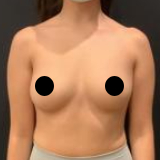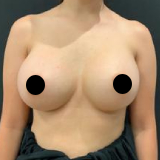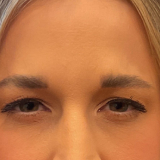Mohs Reconstruction
Consultations offered at our three convenient locations in Austin, TX, San Antonio, TX and Westlake Hills, TX

Mohs reconstruction is a procedure used to help reconstruct wounds after patients have undergone skin cancer removal treatments. Reconstruction can be done to a variety of places on the body, but is primarily performed on areas such as the nose, lips, chin, eyelids, eyebrows, hands, feet, ankles, and areola. (1)
Mohs reconstruction is a very versatile procedure with many possibilities and treatments available. No matter what condition the patient is experiencing, we can offer the best results possible.
At Austin Plastic Surgeon, we are dedicated to helping our patients restore their confidence. Our skilled team of experts has countless combined years of experience, allowing us to offer only the most reliable and advanced procedures. Our premium experience helps each patient find the most effective method to revitalize their skin and return to their daily life with ease.
To schedule a Mohs reconstruction consultation at our Austin, San Antonio, or West Lake Hills locations, please fill out our contact form or give us a call, and a member of our team will respond as soon as possible.
- Austin, TX: (512) 253-2845
- San Antonio, TX: (726) 215-7059
- West Lake Hills, TX: (512) 253-2845
Contents
About Mohs Reconstruction
Mohs reconstruction is a procedure designed to help reconstruct areas of the body that have recently undergone treatment to remove forms of skin cancer. The procedure restores the cosmetic appearance and functionality of these areas while also enhancing one’s confidence and quality of life. This procedure is often performed the same day as–or shortly following–the removal of basal cell carcinoma and squamous cell carcinoma. (1)
To talk to a member of our team about Mohs reconstruction, please call (512) 253-2195 to schedule a consultation at our Austin, San Antonio, or West Lake Hills locations or fill out our contact form.
To learn more about other procedures offered at Austin Plastic Surgeon, please visit our blog.
Benefits
There are many benefits to receiving a Mohs reconstruction procedure. Undergoing Mohs reconstruction can help restore the aesthetic appearance of the treatment area, an important factor for candidates who may need to undergo treatment in highly visible areas. A Mohs reconstruction treatment also leaves minimal scarring, as many advanced techniques can be used to help hide the appearance of scars. This procedure is also versatile and can be applied to any part of the body that has undergone a skin cancer removal procedure.
Candidates
All candidates interested in a Mohs reconstruction should be in good overall health and free from any underlying medical conditions that might inhibit healing. Patients who smoke may need to quit a few weeks before the procedure and refrain from any tobacco or nicotine until fully healed or approved by their surgeon.
Ideal candidates for Mohs reconstruction are those who are dissatisfied with the aesthetic appearance of areas such as the hands, face, feet, and even ears after a skin cancer excision procedure. (1) Candidates may have had basal cell carcinoma or squamous cell carcinoma removed recently and require cosmetic or reconstructive repair of the wound.
Your candidacy for a Mohs reconstruction procedure and the details of your procedure will be determined during a consultation with one of the expert Austin Plastic Surgeon providers.
Personal Consultation
At Austin Plastic Surgeon, we ask each patient to schedule a personal consultation before their procedure. This is for our team to get to know each patient and better understand their treatment goals and health conditions. After a detailed conversation and examination, your surgeon will be able to start planning the best strategy to restore the condition of the skin. Each patient will also discuss the cost of their treatment with our team, and any preparation and recovery instructions will be provided for the patient.
To schedule your consultation, please complete our online contact form or call (512) 253-2195 to reach our Austin, San Antonio, or West Lake Hills locations.
Preparation
Before their procedure, surgeons will provide each patient with specific preparation instructions. Please plan to take time away from work and other social commitments following the procedure. We may ask patients to stop certain medications before their procedure, such as blood-thinning medications or certain supplements. Individuals who smoke should be prepared to quit a few weeks before their procedure, and all patients should limit their alcohol intake. Those undergoing more extensive reconstruction are recommended to pre-arrange any necessary transportation or assistance needed.
Procedure
The procedure starts with the administration of anesthesia. While local anesthesia is most commonly used during this procedure, your surgeon will discuss your available options with you at your consultation. Multiple methods and techniques can be used to complete a Mohs reconstruction procedure.
Primary Closure
The primary closure method is the simplest method of Mohs reconstruction. This method involves pulling both edges of the treatment site together before closing them with sutures. This procedure is commonly reserved for milder reconstruction efforts or smaller wounds. (2)
Any scarring from this method is typically minimal and can be hidden in the creases of the skin.
Secondary Intention
Healing by secondary intention is when the wound is left open to heal from the base up without the use of sutures or stitches. This method is primarily reserved for smaller wounds in less visible areas. This method is ideal for patients who are not interested in undergoing any additional treatments or procedures. Second-intention healing can leave inconsistent scarring and have a longer recovery time compared to other reconstructive methods. (3)
Local Flaps
A local flap procedure uses nearby tissue to help cover a wound without detaching the harvested tissue from its blood supply. The tissue is taken from a healthy nearby donor site and is commonly used to help correct highly visible wounds and areas that need preserved function. (4) There are multiple ways in which a flap can be moved to help cover the wound, depending on its placement. This method of reconstruction is more complex than other methods but offers exceptional cosmetic benefits. These flaps are designed in the natural creases and used to preserve the natural shape of the area.
Skin Grafts
Skin grafts are composed of healthy skin from other parts of the body that is used to correct any trauma or deformity at a targeted treatment site. Skin grafting is often reserved for larger or deeper wounds or cases in which the patient does not have enough tissue for a local flap procedure. Skin grafts can either be full-thickness or split-thickness. Full-thickness grafts include all the layers of the skin, while split-thickness grafts only include the top layer.
The duration of each procedure can vary depending on the size and depth of the treatment area, as well as the necessary treatment methods. Your doctor will help explain each reconstructive method to each patient, as well as recommend the best methods for their conditions during a consultation.
Recovery
Patients may experience mild pain immediately after their procedure. This can be managed with over-the-counter pain medication, however, patients should avoid aspirin and other non-steroidal anti-inflammatory drugs (NSAIDs). Patients should ensure they are following all post-procedure instructions given by members of our team.
For the first 24 to 48 hours, patients may choose to use ice packs to help reduce any swelling or bruising. Patients should take time away from work and other social commitments for the first 1-2 weeks of recovery and avoid intensive or strenuous activities.
Surgeons may ask their patients to come in for follow-up visits for our team to monitor their healing. Any scarring will fade throughout the following 6 to 12 months after the procedure, gradually becoming less discernible over time.
Cost of Mohs Reconstruction in Austin
The cost of each Mohs reconstruction can depend on a variety of factors such as the selected treatment area, the size of the wound, and the health condition and history of each patient. As the procedure is completely tailored to individual needs, it can be difficult to estimate a cost. The full price of the treatment will be discussed with each patient at their consultation, once a treatment plan can be established. To schedule your consultation, please submit our online contact form. If you have any further questions or would prefer to schedule your appointment(s) over the phone, please call (512) 253-2195 to reach our Austin, San Antonio, or West Lake Hills locations.
FAQ
Will a Mohs reconstruction procedure treat skin cavities left by skin cancer excision procedures?
Yes! That is the main goal of Mohs reconstruction. Patients with deformities, cavities, and other scars left by surgical excision can enhance their appearance and eliminate these issues with reconstruction methods.
Is Mohs reconstruction painful?
Patients do not feel pain during the procedure itself because we administer local anesthesia. They may experience some soreness and tenderness in their treatment areas after their procedure, but these can be treated easily with over-the-counter medications and cold compresses.
Will insurance cover my Mohs reconstruction?
Insurance coverage varies among different companies and policies. If patients receive insurance coverage for their skin cancer excision procedure, they are likely (but not guaranteed) to receive coverage for Mohs reconstruction. Our office staff can help you navigate your coverage possibilities.
Will Mohs construction leave scars?
Any incisions required in your Mohs reconstruction are strategically placed to minimize their visibility. Any scars left will be minimal and fade as you continue to heal.
References
- Prickett KA, Ramsey ML. Mohs Micrographic Surgery. PubMed. Published 2020. https://www.ncbi.nlm.nih.gov/books/NBK441833/
- Bittner G, Cerci F, Kubo E, Tolkachjov S. Mohs micrographic surgery: a review of indications, technique, outcomes, and considerations. Anais Brasileiros de Dermatologia. 2021;96(3). doi:https://doi.org/10.1016/j.abd.2020.10.004
- Verma K, Lewis DJ, Siddiqui FS, Dane A. Mohs Micrographic Surgery Management of Melanoma and Melanoma In Situ. Nih.gov. Published August 28, 2024. https://www.ncbi.nlm.nih.gov/books/NBK606123/
- Cusick AS, Shahwan KT. Mohs Micrographic Surgery Design and Execution of Intermediate and Complex Closure. StatPearls. Published online 2024. https://pubmed.ncbi.nlm.nih.gov/38753925/





